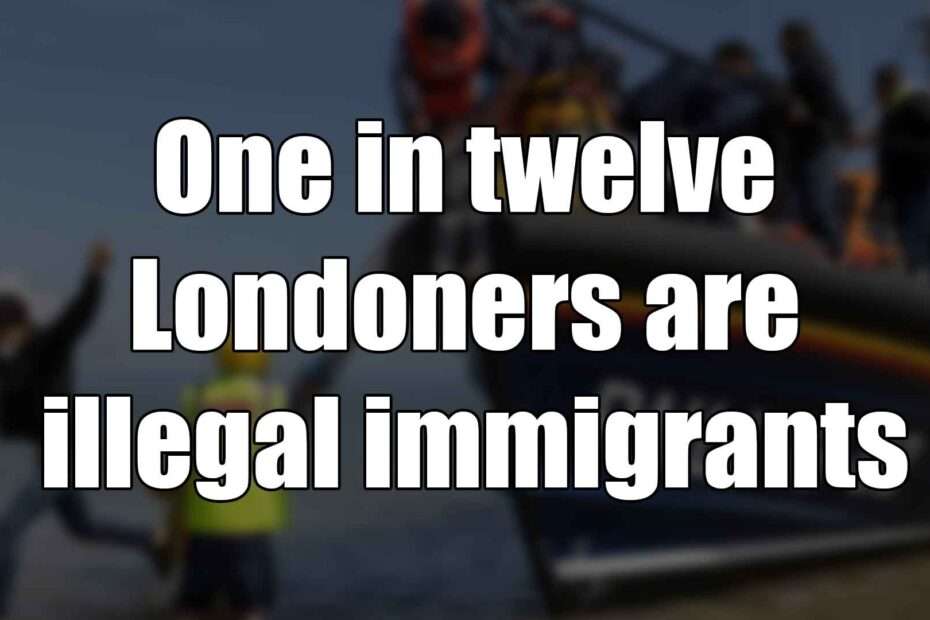One in twelve Londoners are illegal immigrants
One in Twelve Londoners Potentially Undocumented: Shocking Population Study Reveals Significant Migrant Presence
A groundbreaking confidential study commissioned by Thames Water has unveiled startling statistics about London’s population, suggesting that approximately one in twelve residents may be residing in the United Kingdom without legal documentation.
The meticulously researched report, compiled by researchers at Edge Analytics, presents a comprehensive analysis of the capital’s ‘irregular’ population. Using a sophisticated methodology that combines academic estimates of national illegal migration patterns with National Insurance registration data for non-EU foreign nationals over a nine-year period, the study provides a nuanced breakdown of undocumented residents across London’s boroughs.
Detailed Findings and Methodology
The research yielded a range of estimated figures, with the lowest projection standing at 390,355 undocumented individuals and the highest reaching 585,533. The median estimate sits at 487,944 – a figure that represents a significant proportion of London’s diverse population.
Researchers hypothesise that the majority of these individuals entered the United Kingdom legally through work, study, or visitor visas, subsequently overstaying their permitted duration. The report aligns with broader national estimates suggesting more than one million illegal migrants are present in the UK, with approximately 60 percent concentrated in the capital.
Political and Administrative Response
Shadow Home Secretary Chris Philp expressed grave concerns about the findings, stating emphatically: “It is totally unacceptable to have these numbers of illegal immigrants in the UK. The legislative framework needs careful examination to prevent spurious human rights, modern slavery, and asylum claims from impeding the removal of individuals without legal status.”
Richard Tice, deputy leader of Reform UK, echoed similar sentiments, highlighting potential economic and infrastructural implications. “One in twelve people in London are here illegally, likely working without proper authorisation and utilising taxpayer-funded public services and infrastructure. This situation is entirely unacceptable and underscores the urgent need for robust border control,” he commented.
Broader Immigration Context
The study emerges against a backdrop of escalating migration challenges. Recent data reveals that over 1,000 migrants have already crossed the English Channel in small boats during the first 21 days of 2025 – the quickest such milestone on record. In the previous year, 36,816 individuals successfully navigated the treacherous shipping strait, marking the deadliest year for small boat migrations.
The Home Office has attempted to address these challenges, with a spokesman emphasising their commitment to action: “This Government is actively strengthening global partnerships and systematically dismantling criminal networks profiting from dangerous small boat crossings. We have successfully removed 16,400 illegal migrants in just six months – the highest figure in half a decade – demonstrating our resolute stance that those arriving through illegal channels will be returned.”
Enforcement Efforts
Recent enforcement operations have intensified, particularly in London. Between July and November, the Home Office’s Immigration Enforcement team conducted nearly 1,000 visits, resulting in 770 arrests and 462 premises receiving civil penalty notice referrals. Potential fines for employers can reach up to £60,000 per illegal worker.
Minister for Border Security and Asylum, Dame Angela Eagle MP, emphasised the government’s commitment: “Dismantling criminal networks and restoring order to our asylum system is fundamental to our Plan for Change. We are deliberately increasing arrests and enforcement visits to prevent systemic abuse of our immigration framework.”
Targeted raids have focused on sectors frequently associated with illegal employment, including car washes, nail bars, supermarkets, and construction sites. These operations aim to address not only immigration violations but also potential labour exploitation and working conditions beneath legal standards.
Utility Sector Perspective
Thames Water, which commissioned the initial study, maintained a measured response. A company spokesman clarified: “Our analysis of ‘hidden and transient’ populations utilises independent consultants drawing from publicly available sources, including census data, surveys, and published academic research. Thames Water was not involved in drafting the report’s conclusions.”
Broader Implications
The report raises critical questions about infrastructure planning, service provision, and the socio-economic dynamics of London’s rapidly evolving demographic landscape. It underscores the complex challenges faced by policymakers in managing migration, balancing humanitarian considerations with legal and economic imperatives.
As the debate continues, this groundbreaking study provides unprecedented insight into the scale and nature of undocumented migration in the United Kingdom’s capital city, promising to fuel ongoing discussions about border control, immigration policy, and social integration.
Summary
• A confidential study suggests that approximately one in twelve London residents (between 390,355 and 585,533 people) may be living in the UK without legal documentation.
• Most undocumented migrants reportedly entered legally on work, study, or visitor visas and then overstayed their permitted duration.
• The study, commissioned by Thames Water, used National Insurance registrations and academic estimates to calculate the figures.
• Political figures like Chris Philp and Richard Tice expressed concerns about the potential impact on public services and border control.
• In 2025, over 1,000 migrants have already crossed the English Channel in small boats within the first 21 days – the quickest such record.
• The Home Office claims to have removed 16,400 illegal migrants in six months, the highest figure in half a decade.
• Between July and November, immigration enforcement conducted nearly 1,000 visits in London, resulting in:
– 770 arrests
– 462 premises receiving civil penalty notice referrals
– Potential fines up to £60,000 per illegal worker
• Enforcement efforts focused on sectors like car washes, nail bars, supermarkets, and construction sites.
• The report highlights the complex challenges of managing migration, balancing legal, economic, and humanitarian considerations.

